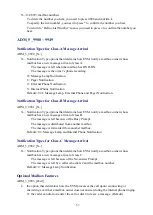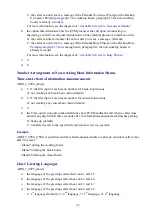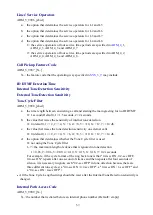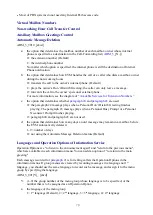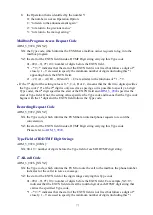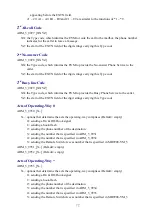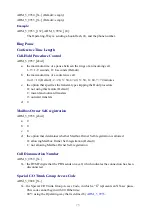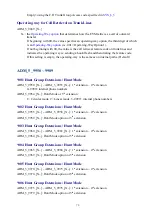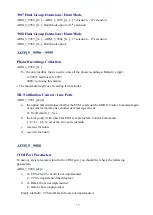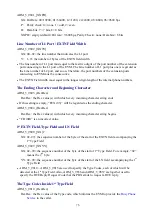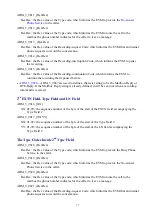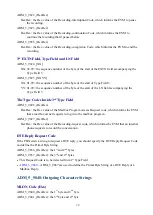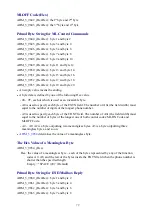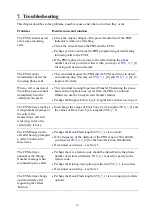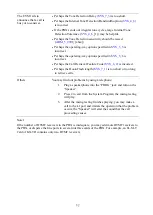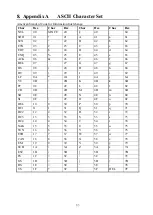
81
7.
Troubleshooting
This chapter describes some problems, possible causes, and what to do when they occur.
Problems
Possible cause and solution
The EVM cannot answer
all or some incoming
calls.
Check the output voltages of the power transformer if the POW
indicator is dark or not flashing.
Check the wires between the PBX and the EVM.
Perhaps you have not done the PBX programming of transferring
incoming calls to the EVM.
If the PBX replies a busy tone to the caller dialing the phone
number of a Line port in fact that is idle, you may set
_[1]
for using port detection feature.
The EVM cannot
immediately answer the
incoming phone calls.
This is normal because the PBX and the EVM need time to detect
_[0], to
improve the delay.
When a call is answered,
the calling person cannot
immediately hear the
called person speech.
This is normal in using Supervised Transfer. Shortening the pause
between the ringback tone cycles from the PBX is a solution.
Otherwise, use the Unsupervised Transfer feature.
Perhaps the Ringback Tone Cycle Lengths have not been set up yet.
The EVM always replies a
wrong-number message to
the caller after
transferring a call and
retrieving; in fact, the
called party is busy.
Interchange the values of Error Tone Cycle Lengths (SYS_7_4) and
the values of Busy Tone Cycle Lengths (SYS_7_5).
The EVM hangs up the
call after having prompted
a caller to hold on for
three times.
Perhaps the Hook-Flash length (
) is too short.
If the frequency of the dialtone of the PBX is not of 300~640 Hz,
_[2] for the Tone Detection Bandwidth.
Occasional occurrence – see Note 1.
The EVM always
announces the Wrong
Number message when
reconnecting any caller.
Perhaps there is a feature code should be dialed before the phone
feature code.
Perhaps the Dialing-way option specified in
Occasional occurrence – see Note 1.
The EVM always hangs
up immediately after
requesting the callers
'hold on'.
Perhaps the Hook-Flash length (
) is too long to put callers
on hold.

